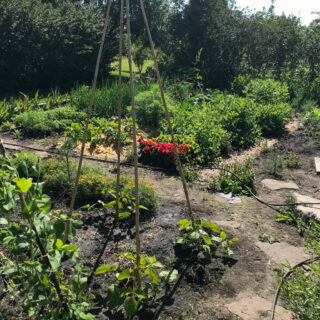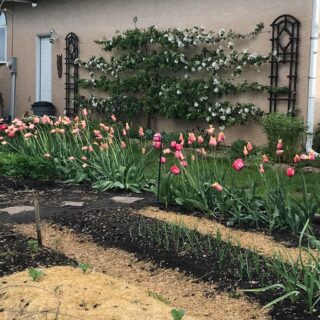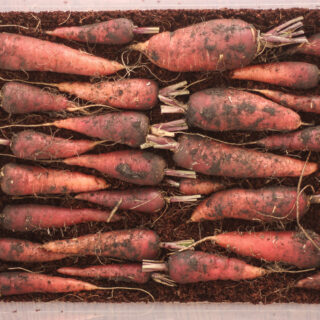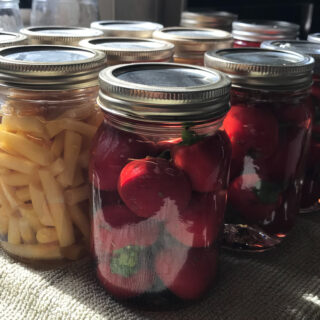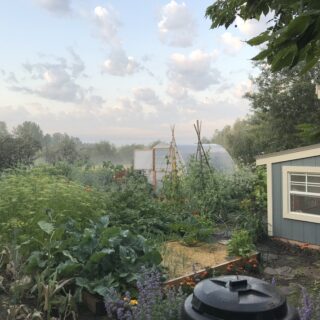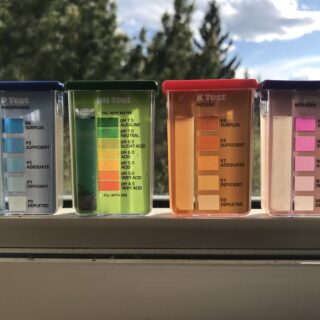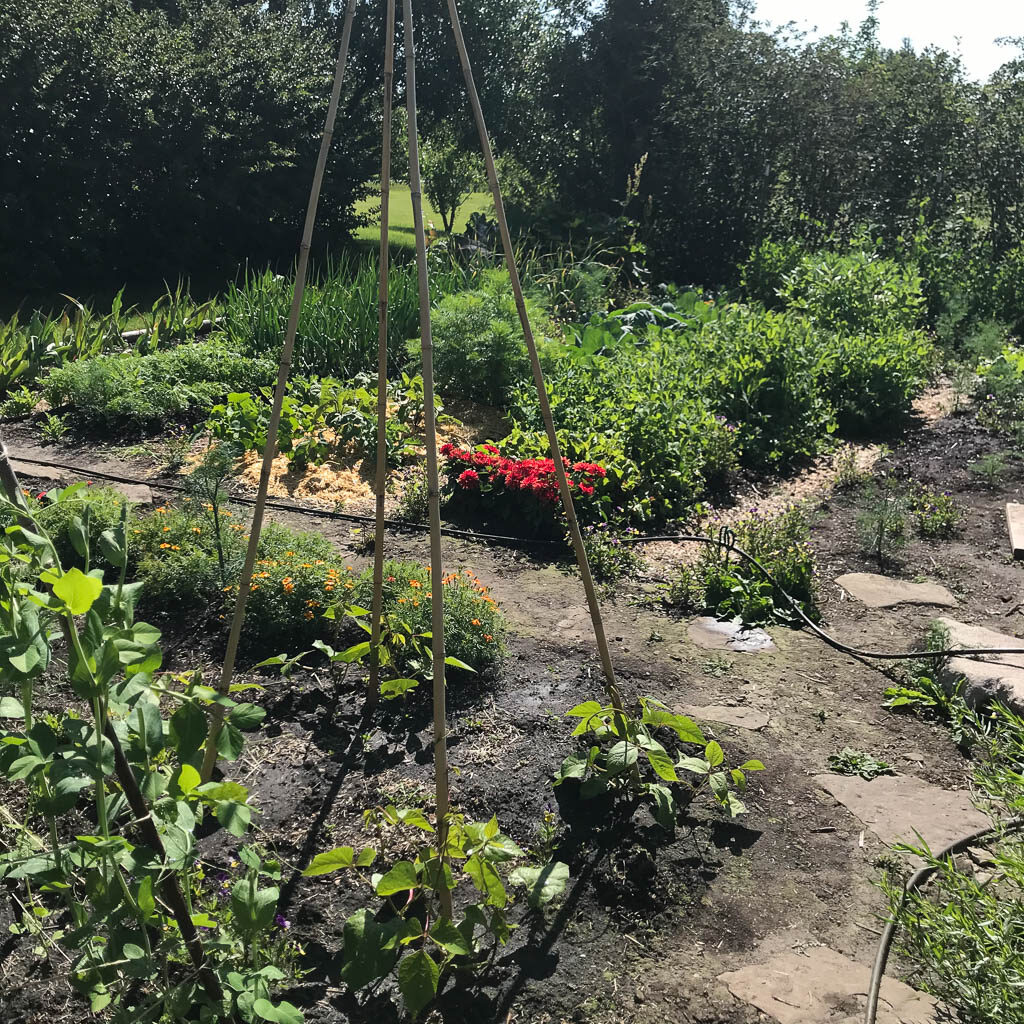
In the 27 years that we’ve been on our property my garden has changed and evolved and I’ve tried all kinds of ideas and methods for gardening. In 2020 I began an experiment in raised row gardening.
Our garden is built in a spot where we had a very low area. Built as a drainage swale it was obvious early on that it was designed in a way that would never have drained any water. So we decided to fill it in and put a garden there. The cheapest way to fill a huge area was from a rotted manure pile at a nearby farm. 16 dump truck loads built the base and then we added 9 loads of black loam to the top. My garden is literally built on a pile of shit 🙂
Originally I told Steve I wanted raised beds with pea gravel walking paths. That never happened. Honestly I think he was tired. We had just built our custom home in the country. We were young, feeling cash strapped and pretty exhausted. It is stressful to build a home and we had a yard of mud and two little kids. So, I started gardening the next spring in the traditional way; put some seeds into the dirt, water and wait.
Right from the start it was important to me that it be pretty. I’m also a very practical person, so I did divide the garden into 4 quadrants and laid down flat stones for main walking paths. This gave me the ability to roughly plan my crops into 4 yearly rotations. My garden has always included flowers, always.
For many years there have been only minor changes to the structure of the garden. I have fought with a patch of horseradish that took nearly 10 years to finally smother out (don’t do it, just don’t!). I have struggled to get a row of nanking cherries to do well along the West edge. Three years ago I added one raised bed, thinking that maybe I would get to my original plan one bed at a time. That has recently become my dedicated strawberry patch.
Two years ago I built myself a chicken coop and run (where the horseradish had been) as part of my permaculture sustainability plan – and to have lawn ornaments with benefits 🙂

Last year I added one more, shorter, raised bed but then due to Covid supply chain issues I couldn’t get any more of these corners to do more. I’m clearly not meant to have raised beds!
Anyway, my point is that a garden is an evolution. As you grow and as things grow, and die, and are replanted to grow again, things change.
Last fall I came across a blog talking about raised row gardens and I got curious. Funny enough my friend and neighbor Michele found the same info at a similar time and ordered the book. We both decided to give this raised row gardening thing a go for 2021.
In raised row gardening, basically the idea is that you lay out set paths to walk on, and set beds, which are raised a bit but not bordered with a container, to grow in. All is mulched. Cover crops, which is something I have been trying to figure out for our short season also figure prominently.
There are many things about this approach that I think are great. First of all it is not good for your soil to be walking on it, compacting it and smothering out beneficial microbes. Having set paths is great; you are never walking on soil you will be growing into. Secondly you are only watering and building soil health in soil you will be growing in; no wasted resources on unproductive land. Thirdly, all is mulched. That means that you are holding moisture, reducing weed growth and preventing erosion at all times. This is a very environmentally friendly concept.
I have thrown myself full on into this new raised row gardening system. I built a few rows last spring and tried both spring peas and buckwheat cover crops. You can see the three set rows I planted in last summer above.
Then in the fall I built the last of my rows, planting one with some cereal rye as a winter cover as a trial run and mulching the rest with a ‘Healthy Straw’ and chopped leaves mixture. Surprisingly this mulch stayed put all winter and the rye did indeed come up this spring.
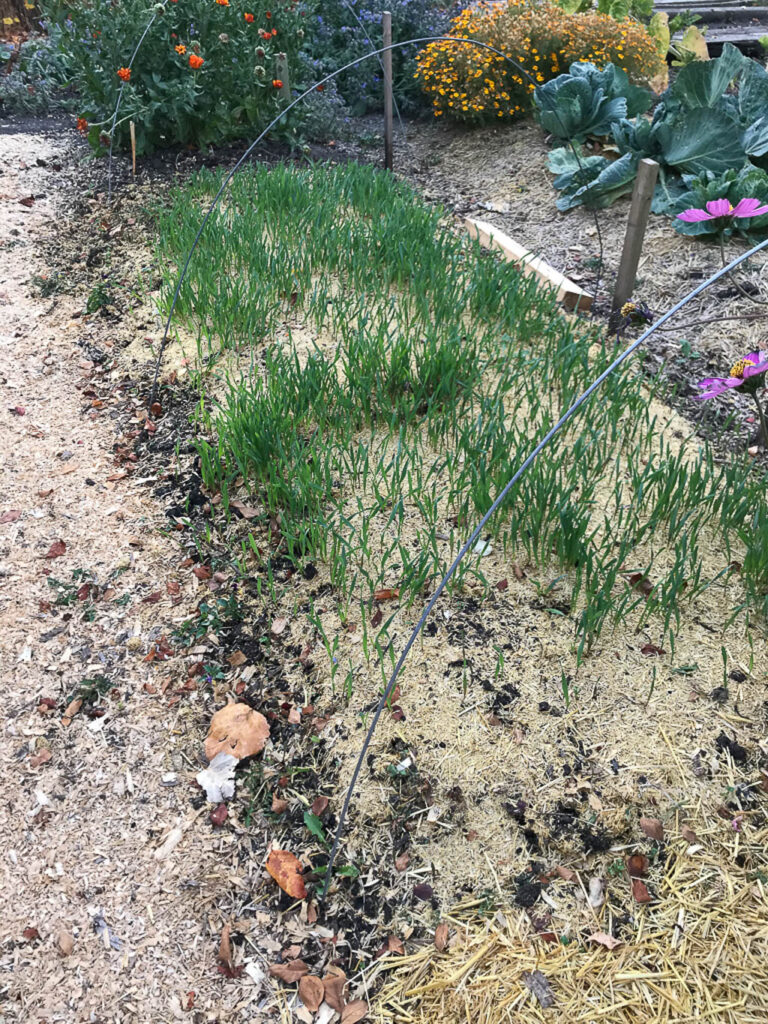
This spring I have planted my cabbages directly into the rye, cutting it back and waiting for it to die back while providing a heavy mulch and green manure. Elsewhere in the garden I have pulled back last fall’s mulch and planted into the raised beds, waiting for the seeds to emerge before replacing the mulch to hold the moisture.
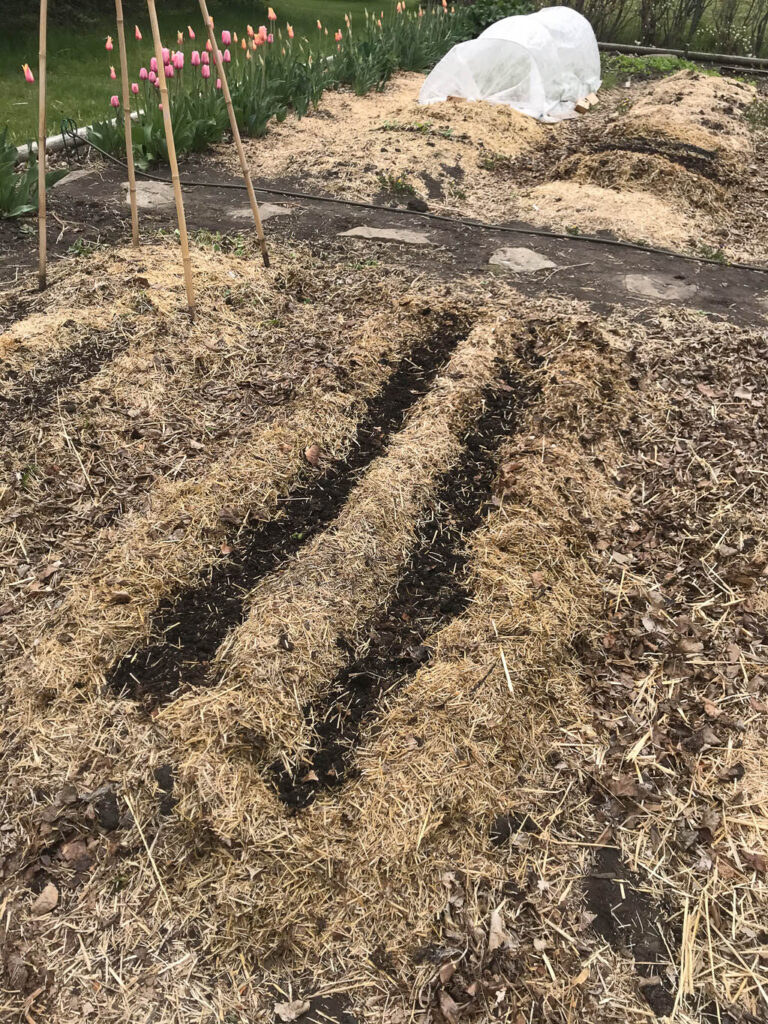
I’m excited about this experiment and can’t wait to see how raised row gardening works out for my garden this year. Have you ever tried this?
